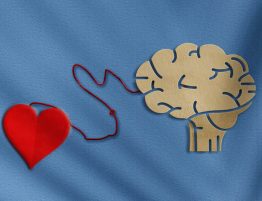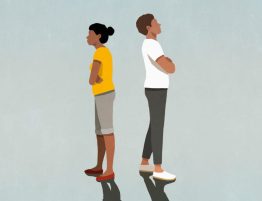
College sports have seen a decline in the rate of sudden cardiac deaths, but rates remain higher for Division I men’s basketball players, as well as male and Black athletes in other sports, new research has found.
The decline in sudden cardiac death rates – on average, by 29% every five years for the past 20 years – may be attributed to improved survival rates as a result of “more widespread education” on CPR, the availability of automated external defibrillators, or AEDs, and emergency action plans, the study’s lead author, Dr. Bradley J. Petek, said in a news release.
“Or it may indicate improvements in pre-participation cardiovascular screening,” said Petek, director of sports cardiology at Oregon Health & Science University in Portland.
The research was presented Monday at the American Heart Association’s Scientific Sessions conference in Philadelphia and simultaneously published in Circulation.
Sudden cardiac death happens when an electrical malfunction causes a rapid, irregular heart rhythm that stops the heart. It was the cause of more than 436,000 deaths in the U.S. in 2020, according to AHA statistics.
The study examined autopsy reports and medical histories related to the deaths of 1,102 NCAA athletes from July 2002 through June 2022. The athletes were at least 17, and 78% of them were male. The deaths were categorized by cause, including cardiac, cancer, suicide, heat stroke or unknown.
Sudden cardiac death was the cause in 143 cases, and not all deaths happened during physical exertion. The most common heart-related causes were idiopathic left ventricular hypertrophy or possible cardiomyopathy – diseases of the heart muscle’s structure and function – and hypertrophic cardiomyopathy, a thickened heart muscle.
Eight deaths were attributed to myocarditis, an inflammation of the heart, but none were due to COVID-19 infection.
Commotio cordis, a rare event caused by a blow to the chest, accounted for two sudden cardiac deaths. The condition caused NFL player Damar Hamlin’s cardiac arrest during a “Monday Night Football” game in January.
Black and white NCAA Division I men’s basketball players had the highest incidence rate of sudden cardiac death: more than 1 in 2,000 over a four-year collegiate career, the analysis found. Among all sports, Black athletes were about three times as likely to experience sudden cardiac death than white athletes, while men were about four times as likely as women.
The sports with five or more reported sudden cardiac deaths during the study period were football, basketball, track and field, soccer, cross country, baseball and swimming.
The findings show “there still are some disparities that need future study,” Dr. Shelley Miyamoto said in the release. Miyamoto, director of the Cardiomyopathy Program at Children’s Hospital Colorado in Aurora, was not involved in the research.
In cases where autopsies lack enough evidence to determine the cause of a sudden cardiac death – the situation for 20% in the study – Miyamoto said genetic testing should be aggressively pursued.
“Genetic testing may potentially provide some answers for why an athlete died suddenly, and it may also provide some insight into whether other family members could be at risk,” she said. “If we can’t understand the cause of the sudden cardiac death, it is going to be difficult for people to accept and understand how to prevent it in the future.”
Researchers said the lack of a mandatory, national reporting system for sudden cardiac death means some cases may have been missed. Other limitations, they noted, include the study’s reliance on autopsy reports, which can vary in quality. There also was no data on resuscitated cardiac arrests or pre-participation cardiovascular screening. Rates of sudden cardiac death among non-college athletes also were not available to make a comparison to athletes.
Like Miyamoto, Petek also sees room for improvement. “We have the opportunity to greatly improve outcomes through ongoing training and education of CPR, providing better access to defibrillators and promoting the use and adherence to emergency action plans,” he said.
Find more news from Scientific Sessions.






